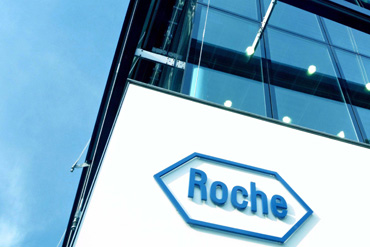
Roche has announced that new Ocrevus (ocrelizumab) data presented at the 7th Joint European Committee for Treatment and Research in Multiple Sclerosis (ECTRIMS) – Americas Committee for Treatment and Research in Multiple Sclerosis (ACTRIMS) Meeting in Paris, France. The data presented showcase clinical advances around underlying disease activity and disability progression in relapsing and progressive forms of multiple sclerosis (MS), through the exploration of newly emerging endpoints and precision monitoring.
Ocrevus significantly reduced the proportion of people with RMS who experienced Progression Independent of Relapse Activity (PIRA) in a post-hoc analysis compared to Rebif (interferon-beta 1a). This effect was particularly seen in those who were potentially at higher risk of progressive disease course based on their baseline Expanded Disability Status Scale (EDSS). Specifically, in this analysis, Ocrevus treatment reduced the risk of PIRA by 25 percent and 23 percent confirmed at 12 and 24 weeks, respectively (p=0.008 and p=0.039, respectively).
PIRA is a newly emerging MS endpoint intended to measure an increase in disability, which is related to underlying disease activity in RMS. These data were generated through a post-hoc analysis of more than 1,600 people randomly assigned to treatment in OPERA I and OPERA II, and assessed for PIRA, as measured by cCDP. cCDP is a measure of the risk of a person’s physical disability getting worse and is based on three measures of physical disability – confirmed disability progression, walking speed and upper extremity function.
“These new analyses of data from the large controlled studies with Ocrevus help advance our understanding of how in relapsing MS the disease may progress independent of relapses. These insights have implications for daily decisions made together with patients,” said Ludwig Kappos, MD, Chair of the Department of Neurology, University Hospital, Basel, Switzerland. “Even without experiencing relapses, people with RMS may still have underlying disease activity, which can cause irreversible decline in their mobility and day-to-day quality of life. Recognising and understanding this process supports early indication of more efficacious treatment.”
A platform presentation, also highlighting underlying disease activity, showed that a new algorithm using conventional MRI can be used as a possible biomarker to automatically detect Slowly Evolving Lesions (SELs), as a potential measure of chronic disease activity outside of acute lesions in the brain. SELs were shown to evolve independently of acute lesions leading to enhanced focal brain tissue loss, as measured by T1 black hole evolution. Further research is needed, but this algorithm for automatic detection of SELs using conventional brain MRI may provide a marker of chronic disease activity in MS lesions.
“This new ability to detect both acute and underlying disease activity with conventional MRI may advance the way we monitor for MS progression and how we think about overall patient management,” said Stephen Hauser, MD, Chair of the Scientific Steering Committee of the OPERA studies, Director of the Weill Institute for Neurosciences and Chair of the Department of Neurology at the University of California, San Francisco. “While we’ve seen SELs can occur across MS subtypes, this finding may be particularly promising for people with PPMS whose worsening of disability may be related to the presence of SELs. This study also highlights the importance of continued research in MS, not only for development of new treatments such as Ocrevus, but for the insights that are gained about the fundamental cause of this debilitating disease.”
New data from the FLOODLIGHT clinical trial program, which is designed to assess sensor-based outcomes from a series of active neurological tests and passive monitoring through the use of a smartphone is also being presented. The tool enables a continuous stream of precise, real-world MS disease progression data to be collected and analysed using dedicated algorithms and machine learning.
Data at ECTRIMS – ACTRIMS demonstrate strong patient adherence to the FLOODLIGHT technology. Hand/arm function measured with a smartphone-based pinching test may detect subclinical impairment in those who have normal Nine-Hole Peg Test (9-HPT) performances. Turning speed measured with a smartphone-based U-Turn Test was shown to correlate with the Timed 25-Foot Walk (T25-FW) (p<0.001), and may detect subclinical activity compared to normal in-clinic performances. The data support FLOODLIGHT as a potential complement to in-clinic testing to provide a more complete and consistent picture of a patient’s disease progression.
Additionally, OPERA I, OPERA II and ORATORIO phase III open-label extension data presented at ECTRIMS – ACTRIMS continue to show a favourable benefit-risk profile for Ocrevus.
Ocrevus has been approved for use in countries across North America, South America, the Middle East, Eastern Europe, as well as in Australia and Switzerland.
OPERA I and OPERA II are phase III, randomised, double-blind, double-dummy, global multi-centre studies evaluating the efficacy and safety of Ocrevus (600 mg administered by intravenous infusion every six months) compared with interferon beta-1a (44 mcg administered by subcutaneous injection three times per week) in 1,656 people with relapsing forms of MS. In these studies, relapsing MS (RMS) was defined as relapsing-remitting MS (RRMS) and secondary progressive MS (SPMS) with relapses. A similar proportion of patients in the Ocrevus group experienced serious adverse events and serious infections compared with patients in the high-dose interferon beta-1a group in the RMS studies.
Roche presents, ocrevus positive data, ectrims, actrims meeting